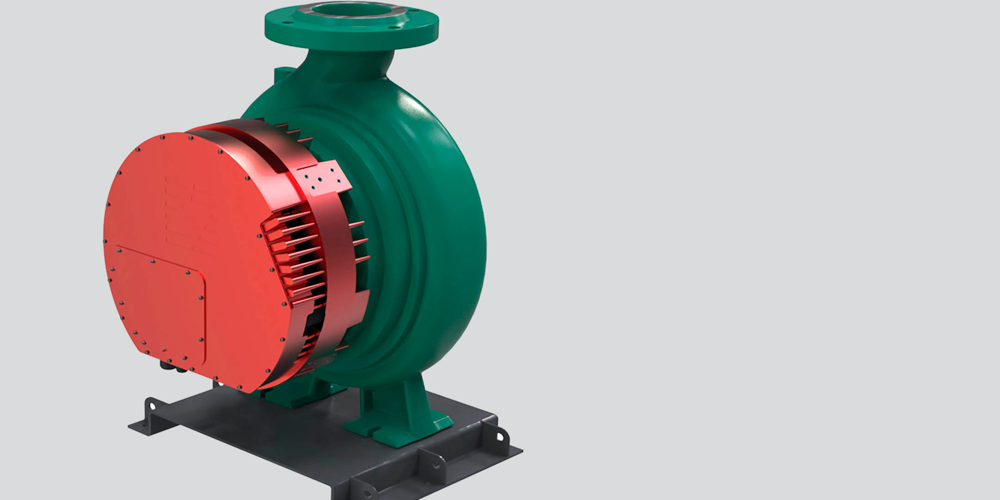
There are several reasons to retrofit the motor in a pump system but the most common reason is to upgrade the system. In this scenario, users will need to select a different motor model or even manufacturer to meet retrofit goals. This is the best solution if goals include:
- improving the performance of the motor, such as making it faster, increasing the horsepower or improving torque
- reducing the energy consumption of the motor
- allowing for different operating speeds by switching from a single-speed motor to variable speed
- improving overall reliability of the system
Selecting a new motor to retrofit for a pump motor can be overwhelming—there are many factors to consider when making a decision. Below are the top challenges of retrofitting the motor in a pump system, as well as several considerations for selection.
Operational Downtime
The challenge with the greatest potential impact on operations is downtime, as the pump system will be offline throughout the entire retrofit process. With proactive planning, users can minimize the impact this has on operations. For example, when retrofitting multiple motors in multiple independent pump systems, users can stagger the retrofit schedule. Another way to minimize the downtime caused by the retrofit is to plan the retrofit during a time when the production schedule is typically light, such as during a third shift or a weekend or holiday. Lastly, users can minimize downtime by selecting a motor that can be easily and quickly installed.
Shaft Misalignment
Ensuring proper mounting and shaft alignment with the pump in the system is another potential challenge in the retrofit process. Having proper shaft alignment is essential to ensuring the motor is efficiently transferring power to the pump. Misalignment can cause several issues that range from annoying to potentially harmful to the system or personnel, including high levels of acoustic noise, excessive vibration and increased temperatures.
A common consequence of these issues is one of the biggest sources of motor failure: bearing failure. Some ways to mitigate challenges associated with shaft misalignment include ensuring proper mounting and shaft alignment upon installation; checking alignment after a few months of operation and annually thereafter; and regularly monitoring potential indicators of misalignment, such as vibration levels.
When selecting a motor for a retrofit, consider the factors below:
1. Sufficient Operational Requirements
The most critical consideration when retrofitting the motor in a pump system is selecting a motor that meets the operational requirements for the application. This is dependent on more than just the specifications of the original motor. If replacing an existing motor, the retrofitted motor must also fit within the optimal performance range of the pump that it powers.
2. Ease of Installation
A motor that can be installed quickly and easily can help to minimize the amount of downtime required for a retrofit and ultimately minimize the impact of the retrofit on the operations.
3. Size & Weight
The size of the motor is also a critical consideration. Users need to ensure that the motor they have selected has a footprint and weight that can fit within and be supported by the current installation setup.
4. Problem-Solving
Lastly, consider whether the motor selected for the retrofit addresses any other pain points that users experience with the current pump system. Is the current setup noisy under normal operating conditions? Consider identifying a quieter motor. Is the current motor a pain to maintain? Does an OEM specialist have to be called for any maintenance tasks? Make it a goal to find a motor that the local repair shop can maintain without requiring extensive training.
Retrofitting a motor for a pump system offers many advantages, but make sure to assess the challenges of potential downtime and shaft misalignment. Before selecting a motor, consider the operational requirements, installation, size and weight, and problems solved. Doing so will help ensure the retrofit is a success.


